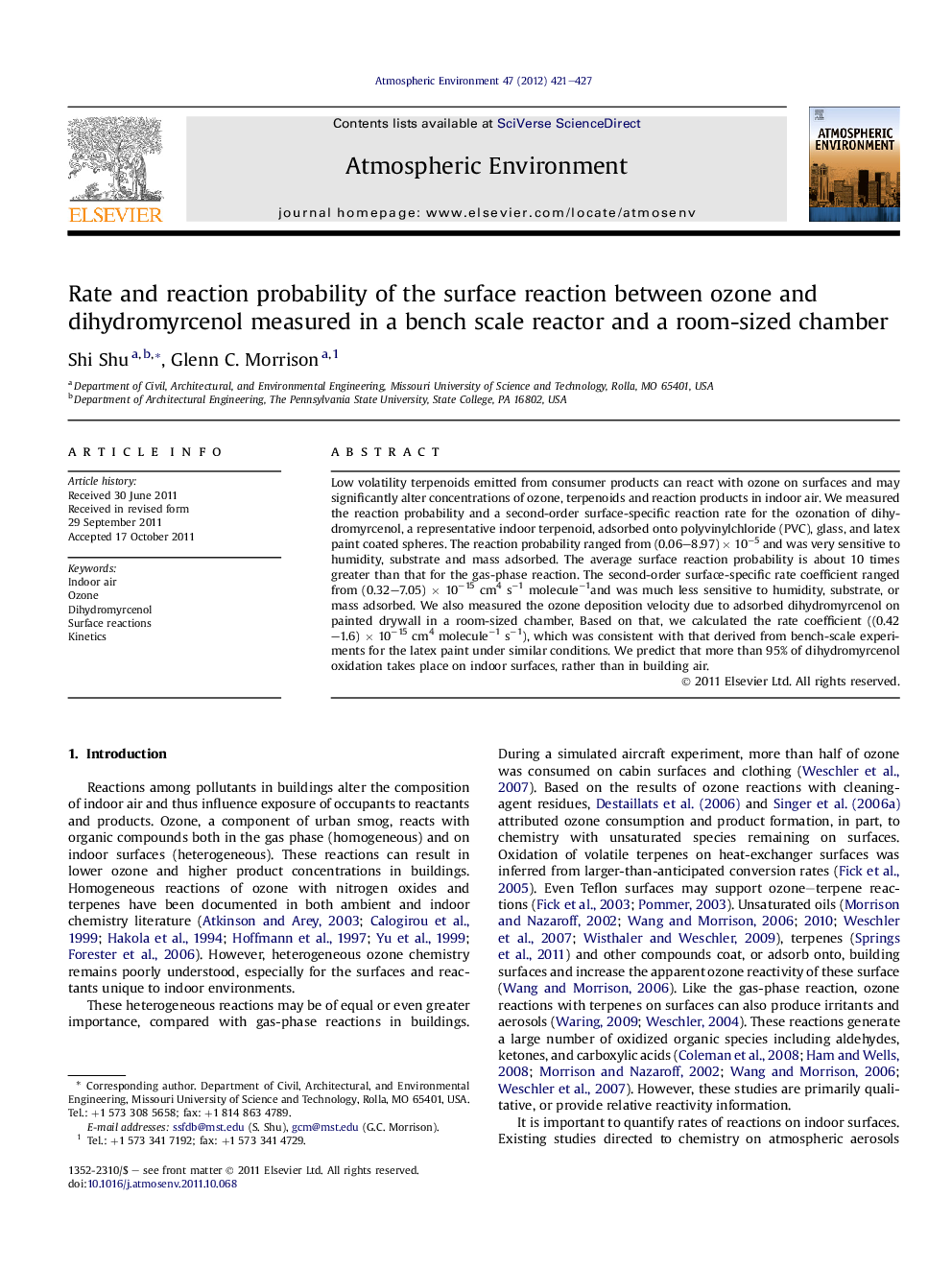| کد مقاله | کد نشریه | سال انتشار | مقاله انگلیسی | نسخه تمام متن |
|---|---|---|---|---|
| 4439032 | 1620424 | 2012 | 7 صفحه PDF | دانلود رایگان |

Low volatility terpenoids emitted from consumer products can react with ozone on surfaces and may significantly alter concentrations of ozone, terpenoids and reaction products in indoor air. We measured the reaction probability and a second-order surface-specific reaction rate for the ozonation of dihydromyrcenol, a representative indoor terpenoid, adsorbed onto polyvinylchloride (PVC), glass, and latex paint coated spheres. The reaction probability ranged from (0.06–8.97) × 10−5 and was very sensitive to humidity, substrate and mass adsorbed. The average surface reaction probability is about 10 times greater than that for the gas-phase reaction. The second-order surface-specific rate coefficient ranged from (0.32–7.05) × 10−15 cm4 s−1 molecule−1and was much less sensitive to humidity, substrate, or mass adsorbed. We also measured the ozone deposition velocity due to adsorbed dihydromyrcenol on painted drywall in a room-sized chamber, Based on that, we calculated the rate coefficient ((0.42–1.6) × 10−15 cm4 molecule−1 s−1), which was consistent with that derived from bench-scale experiments for the latex paint under similar conditions. We predict that more than 95% of dihydromyrcenol oxidation takes place on indoor surfaces, rather than in building air.
► The surface reaction rate of ozone with dihydromyrcenol was quantified.
► Indoor surfaces substantially increase ozone–dihydromyrcenol conversion rates.
► Ozone–dihydromyrcenol conversion was dominated by their surface reaction.
► Low-reactivity compounds can lead to enhanced ozone flux to indoor surfaces.
Journal: Atmospheric Environment - Volume 47, February 2012, Pages 421–427